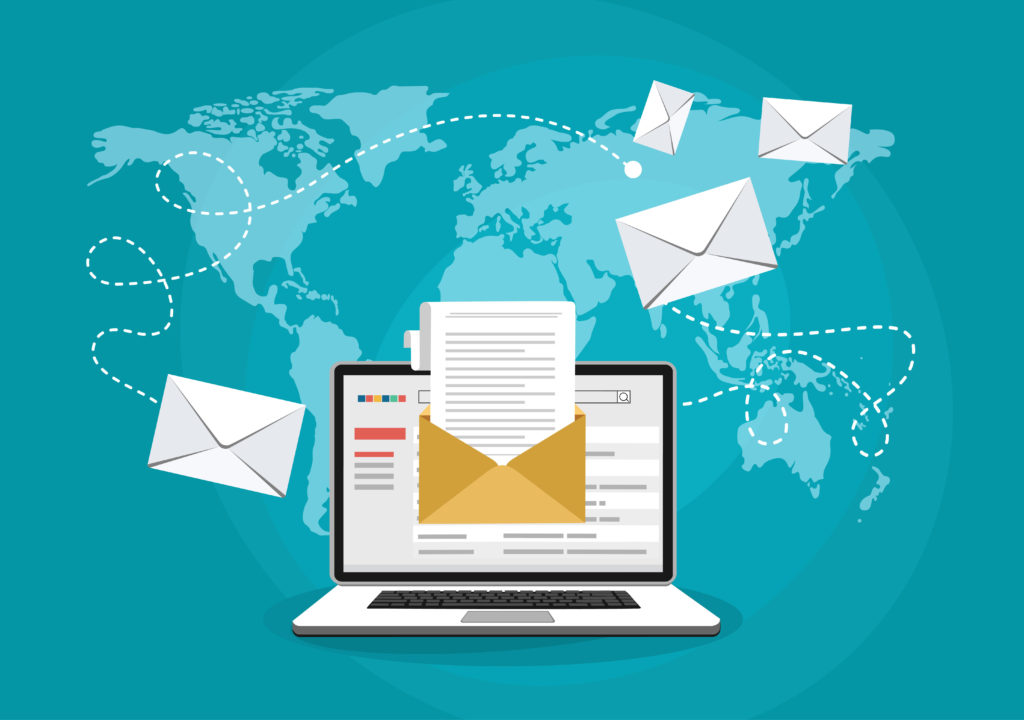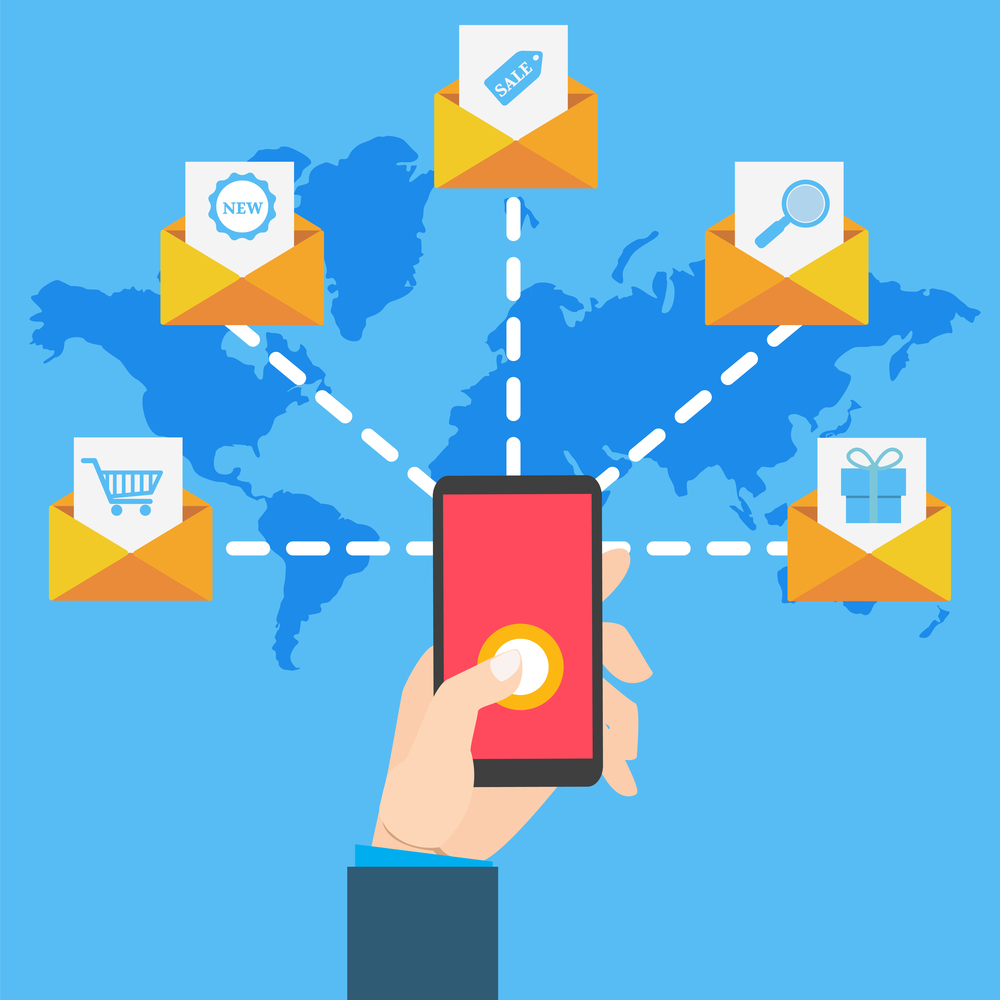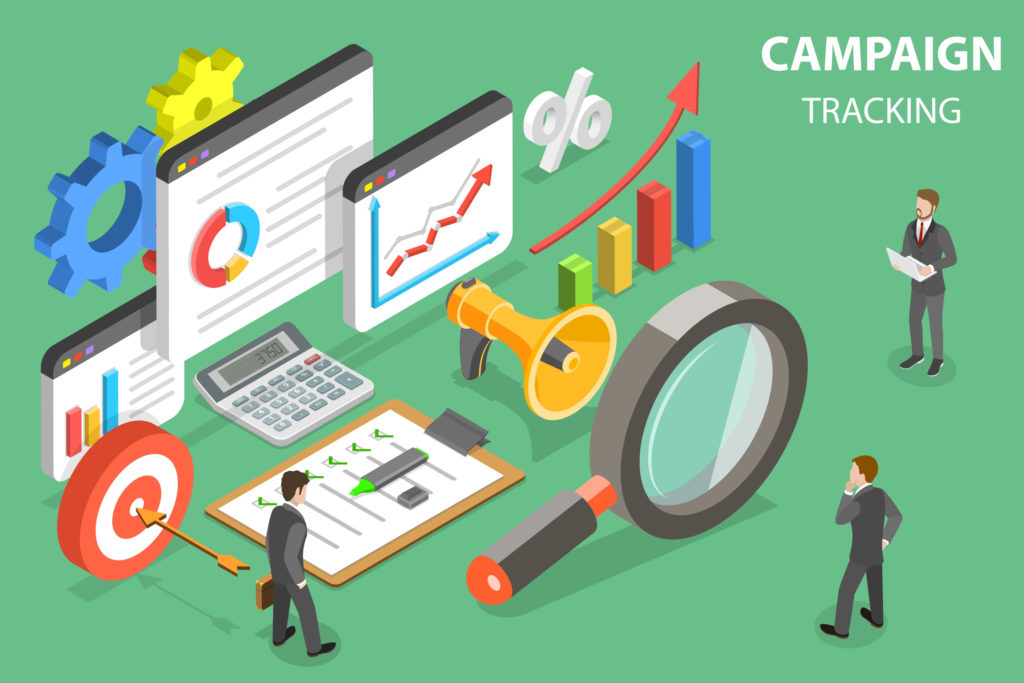LogiCommerce is trusted by global enterprise brands and wholesalers, across industries
There are endless marketing strategies, but today we're going to talk about the email marketing, one of the most effective channels in the online business model. Capturing potential customers, converting them into real customers, and making them loyal to your brand is one of the most difficult challenges in order to be successful.
Email marketing in the eCommerce sector is one of the most efficient and profitable tools. It allows you to send mass email messages based on your company's database, with the intention to increase sales, create a closer relationship with users, and generate greater engagement while attracting new customers to your online store. It is not just about sending emails but planning to create a targeted strategy aligned with your eCommerce goals.
This post will explain everything you need to know to create a successful email marketing strategy without invasive advertising but by providing valuable content for your potential customers.
Contents
Capture new customers
Create a closer relationship between the consumer and your brand
Increase the conversion rate
Interact with your target audience
Generate brand awareness
Convert leads into real customers
Maintain contact during the buying process with your customers
Remain in the "Top of mind" of your customers
Inform about news, discounts, news, promotions, and others
Educate and add value

Very effective sales channel; economical and profitable
The cost of an email marketing campaign is much lower than other traditional channels such as television or radio. In addition, this strategy offers great potential if we take into account that you are sending information to people who at some po int have already been interested in your brand, which means a higher probability of return on investment.
Fully measurable
With an email marketing campaign, you will be able to know the results almost immediately. Thanks to multiple metrics such as the open rate, the number of clicks, or the bounce rate, you can determine its effectiveness, and know if the segmentation, the subject of the message, or the content are causing the expected impact. In addition, the fact that you can automate emails will allow you to speed up the process.
Allows segmentation and personalization
One of the main advantages is the ability to segment an email marketing campaign according to the consumer profiles and the point at which they are, to subsequently customize the content of the message and adapt it to each of the addressees and achieve a higher conversion. Undoubtedly, a segmented database will allow you to optimize results and generate more fluid communication.
Build strong relationships with your customers
In many occasions, visitors agree to share their data so that later, your eCommerce can send them information about news, discounts, promotions, etc. You will be able to contact them via email in a much easier way, providing them engaging content and offering them personalized discounts according to their needs. Thus, closer relationships can be established more easily.
Reduce the rate of abandoned carts
Imagine that users have added several products to the cart, but they have decided to leave your online store before finalizing the purchase, thus, they abandoned their cart. To recover these abandoned carts, you can create automated email messages. You can schedule several reminder emails to be sent, for example; a first email after 2 hours, a second email after 24 hours, and a third email after 36 hours. The content of the message can say something like "Looks like you forgot something" including a direct link to their cart, and you can even add a discount to motivate them to finish their order.
Elaborate the call to action
The call to action is one of the great advantages of the online sector to facilitate conversion in a more direct way. It is simply to encourage the user to perform an action through a button that can be incorporated into an email and has a direct link. Obviously, it must be attractive to the user and must be aligned with the objective of your email marketing campaign to get them to perform the conversion you are looking for.
Increase eCommerce sales
Email marketing is an accessible strategy as emails can be read from any device and at any time. Using a campaign like this, you can also promote your products and even use techniques such as cross-selling or up-selling to boost your eCommerce sales and achieve a higher conversion rate.

Increase web traffic for your eCommerce
Through email marketing and thanks to the opportunity of maintaining closer relations with your customers, you can increase the traffic to your online store, i.e., by offering them updated information about your products, valuable content on your blog, special promotions, and much more. That way, you can also incorporate direct links so that users can access it more quickly while generating an omnichannel experience in all eCommerce sales channels.

Occasional emails
These are emails that are sent occasionally depending on the objective you want to achieve.
For example:
· Newsletters: basically, inform about news and updates about your eCommerce and are also used to send content about the blog and, thus, get to be present in the consumer's mind.
· Promotional email: they are used for example when you want to launch a specific campaign offering a special offer to achieve a conversion. Thanks to database segmentation, you can send promotions to the right audience; limited offers, product pack offers, free gifts, etc.
· Seasonal emails: these are personalized messages that are sent to users on special dates such as Christmas, birthdays, Valentine's Day, and many more. They are short campaigns that try to increase the conversion rate in a short period of time.
Automated Emails
These are emails that are automatically sent to the user when they perform a specific action.

For example:
· Transactional emails: these are messages that are sent automatically to users when they perform a transaction in your online store, such as welcome messages, confirmation of a purchase, the option to reset a password, etc.
· Marketing automation: consists of automatically sending emails to the subscribers of the database that an eCommerce has depending on the user's action. This automation allows sending personalized messages according to the type of profile and the user's interest in order to achieve maximum effectiveness.
Define your audience and make sure you segment it correctly
Establish the objectives of your online store
Design the strategy you want to launch
Carry out the email marketing campaign
Analyze the results obtained
Apply the corrections for your next campaign
One of the main advantages of email marketing is that you can measure the results of your campaign practically immediately and very easily. This allows you to know which aspects can be improved for the next email marketing campaign and also analyze those touchpoints that had a positive impact on the user to enhance them even more.
Open rate: represents the percentage of recipients that opened the email out of the total number of emails delivered. The result is mostly related to the email subject and the engagement between the eCommerce and the users.
Bounce rate: is the total percentage of emails that have been sent but could not be delivered correctly due to email address failures, spam filters, and others, compared to the total number of emails delivered. Soft bounces indicate those temporary problems with a valid email address either due to a full inbox or a server problem, and hard bounces occur when the recipient's email address is invalid, closed, or non-existent.
Click-through rate: measures the percentage of your contacts who have clicked on any of the links included in the mails compared to the total of users who have opened the mail. It is a way of knowing how users interact with your emails and how attractive the content is for them. It may be good to incorporate images that link to offers in your eCommerce, interactive surveys, links to a landing page, etc.
Unsubscribe rate: refers to the percentage of recipients who have unsubscribed from your online store. That will allow you to know how many users have lost interest in your content so that you can be able to investigate whether there is something wrong with your messages, and they are not sufficiently attractive, or whether they have simply lost interest in the content.
Conversion rate: that is the percentage of recipients who have opened the emails you have sent and performed the action you wanted to obtain. This metric is one of the indicators that best reflects the success of your campaign according to the objectives previously established.
Return on investment: it measures the amount of return on your email marketing campaign, relative to the investment’s cost in order to know the efficiency and profitability of the specific campaign. The higher the ROI, the greater the reward. It is important to keep in mind that it is not 100% accurate because during an email marketing campaign, there may also be other factors that influence the decision to make a purchase.

Email marketing is an excellent communication channel to quickly reach your brand's target audience thanks to its capacity for segmentation and personalization, offering valuable content to your users to convert them into real customers. There exist many marketing tools that cover the different aspects of your email marketing strategy such as Connectif, Hubspot, Mailchimp, or SalesManago.
It is an opportunity to increase the conversion rate of your online store while establishing a closer relationship with your customers. It is good to know how to design and plan the delivery of emails so as not to make them intrusive.
To sum up, an email marketing campaign can be a very effective technique for your eCommerce since it requires a low investment and high accessibility.

